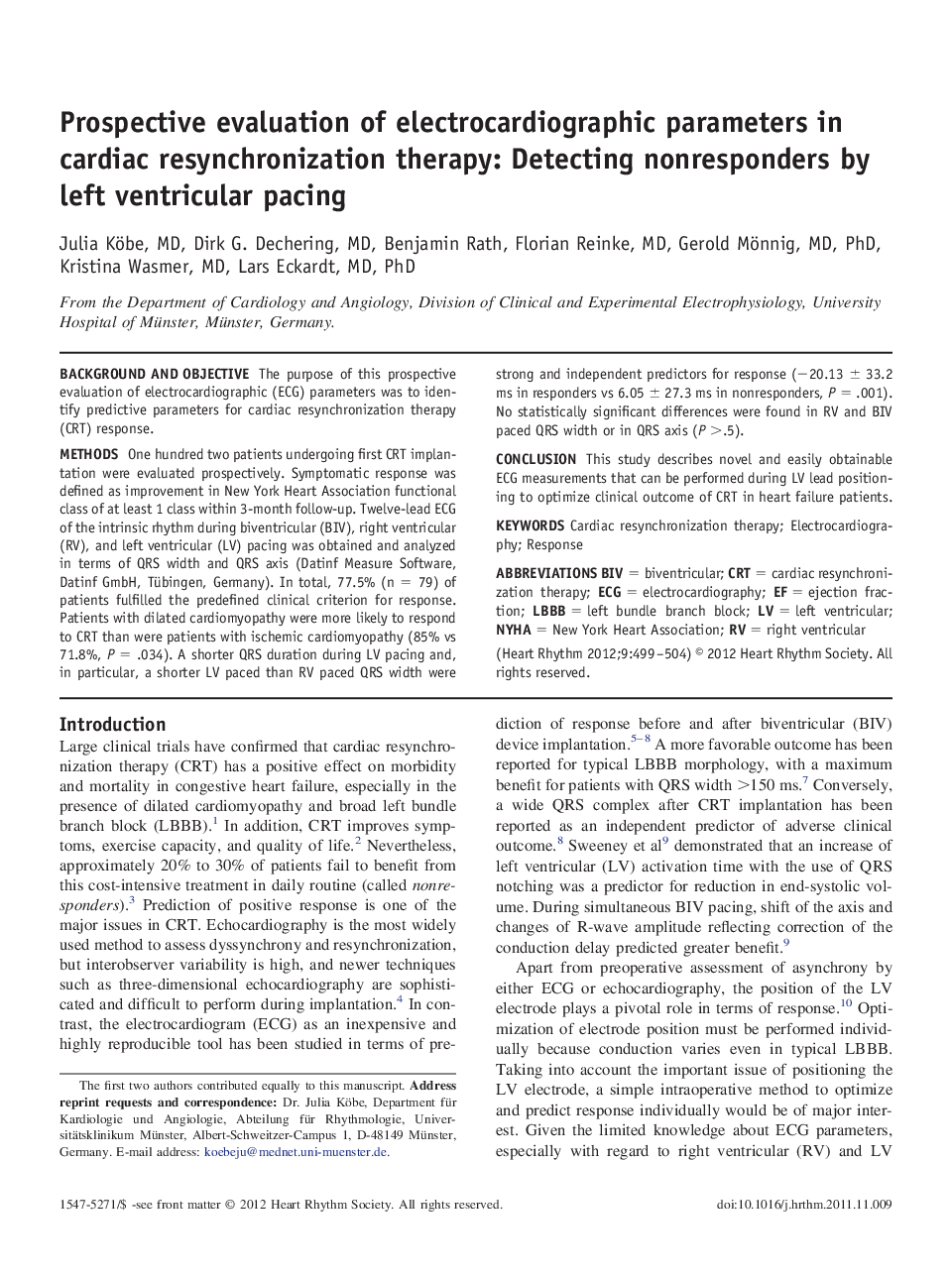| Article ID | Journal | Published Year | Pages | File Type |
|---|---|---|---|---|
| 2923121 | Heart Rhythm | 2012 | 6 Pages |
Background and ObjectiveThe purpose of this prospective evaluation of electrocardiographic (ECG) parameters was to identify predictive parameters for cardiac resynchronization therapy (CRT) response.MethodsOne hundred two patients undergoing first CRT implantation were evaluated prospectively. Symptomatic response was defined as improvement in New York Heart Association functional class of at least 1 class within 3-month follow-up. Twelve-lead ECG of the intrinsic rhythm during biventricular (BIV), right ventricular (RV), and left ventricular (LV) pacing was obtained and analyzed in terms of QRS width and QRS axis (Datinf Measure Software, Datinf GmbH, Tübingen, Germany). In total, 77.5% (n = 79) of patients fulfilled the predefined clinical criterion for response. Patients with dilated cardiomyopathy were more likely to respond to CRT than were patients with ischemic cardiomyopathy (85% vs 71.8%, P = .034). A shorter QRS duration during LV pacing and, in particular, a shorter LV paced than RV paced QRS width were strong and independent predictors for response (−20.13 ± 33.2 ms in responders vs 6.05 ± 27.3 ms in nonresponders, P = .001). No statistically significant differences were found in RV and BIV paced QRS width or in QRS axis (P >.5).ConclusionThis study describes novel and easily obtainable ECG measurements that can be performed during LV lead positioning to optimize clinical outcome of CRT in heart failure patients.
